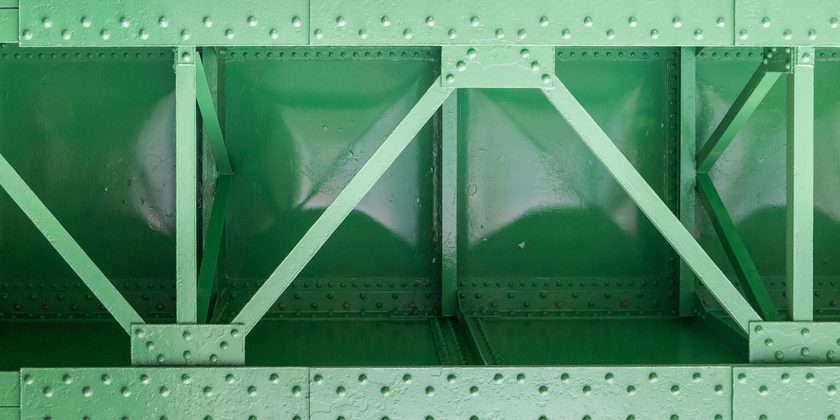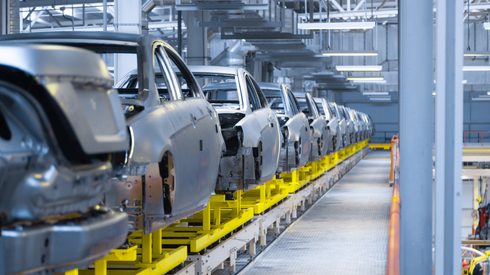Hesitancy to pay green premia in the near term was the current challenge in the development of green steel usage across the globe, Eloot said in a speech at the 13th China International Steel Congress in Shanghai on Monday September 2.
In 2024, only about 20% of respondents in a survey of 23 steel consumers in Europe were willing to pay more than $75 per tonne in green premia for the extra cost of green steel produced using electric-arc furnaces (EAFs) fed with direct-reduced iron (DRI) and powered by natural gas (NG).
And no one was willing to pay more than $330 per tonne in premia for green steel produced using the hydrogen-based (H2) DRI EAF route.
Fastmarkets’ latest weekly assessment of the green steel domestic, flat-rolled, differential to HRC index, exw Northern Europe, was €150-200 ($166-221) per tonne on August 29 this year. This compared with €170-250 per tonne at the end of July, and with €100-250 per tonne a year earlier.
Fastmarkets’ weekly price assessment for green steel, import, differential to HRC index, cfr Vietnam – which calculates the price difference between flat-rolled green steel and the CFR Vietnam price – was $150-200 per tonne on August 30. This was unchanged since May this year, but down from €204-340 per tonne when the assessment was launched on September 8 last year.
By 2030, the NG-DRI-EAF production route for green steel was expected to become economically viable, because costs related to carbon dioxide emissions were increasing amid the planned gradual phasing-out of the allocation of free carbon allowances under the EU’s Emissions Trading System (ETS), starting from 2026.
The extra cost was estimated to fall to about $10 per tonne for the NG-DRI-EAF route by then, a cost that was expected to prompt 85% of steel users to pay the premium.
But the economic gap to the H2-DRI-EAF was still significant, with only 5% of steel users willing to pay the $160 per tonne premium for the extra cost by 2030, according to Eloot.
He said that steel industry participants must think about timing and the choice of technology route to ensure an economically attractive transition.
Green steel premiums in the US are off to a slow start, compared to the figures mills are collecting in Europe and Asia. When will green steel take off in the US? Read on and join our survey.
Decarbonization drives scrap and DRI demand
The global decarbonization move, coupled with the growing availability of steel scrap, will drive a shift to more use of scrap and DRI in steelmaking, with these two materials being the key contributors to the overall increase in metallics demand, Eloot said.
Hot metal operations will still contribute the most – nearly 60% of metallics demand in 2035 – largely in developing regions, but the use of DRI and scrap will grow at a faster pace globally.
Scrap recovery was also important, Eloot said. Although availability was growing, it was still limited, and that will push the drive toward DRI usage, better scrap recovery, and technology breakthroughs such as carbon capture, utilization and storage (CCUS) technology.
Maximizing the use of scrap through best-practice recycling will be critical because alternative green solutions require huge investment, time and energy. For example, electricity consumption in the hydrogen-based production of green steel is five times the figure for scrap-based green steel, Eloot said.
Global demand for metallics – including DRI, prime scrap, obsolete scrap and hot metal – was expected to expand to 2.06 billion tonnes per year by 2035, with DRI accounting for 13%, prime scrap 12%, obsolete scrap 17% and hot metal 58%.
In 2015, DRI only accounted for 5% of the 1.6 billion tpy of metallic demand, while prime and obsolete scrap accounted for 11% each. Hot metal made up 73%, Eloot said.
Expanding green steel demand
Aside from the unwillingness to pay sufficient green premia in the short term, Eloot also noted the opportunities created by the global green transition. Green steel is gaining momentum across key geographies.
He estimated that demand for green flat steel would exceed 250 million tpy by 2040.
Green steel demand, especially for flat steel, was growing faster in the developed world, with most demand coming from the energy and transportation sectors. These were promoting the development of electric vehicles and the use of renewable energy as part of the energy transition, according to Eloot.
For overall steel demand across the globe, growth was expected to slow to less than 1% in 2023-35, from a compound annual growth rate of more than 2% in the past decade.
Thanks to growing population and infrastructure development, Eloot told the congress, new developing regions – led by India, Southeast Asia and the Middle East-North Africa region (MENA) – will drive global demand growth and will offset the decline in China, where steel demand peaked in 2020.
Anticipate what’s ahead for the global steel market with the latest short-term forecasts in one place. Find out more.







